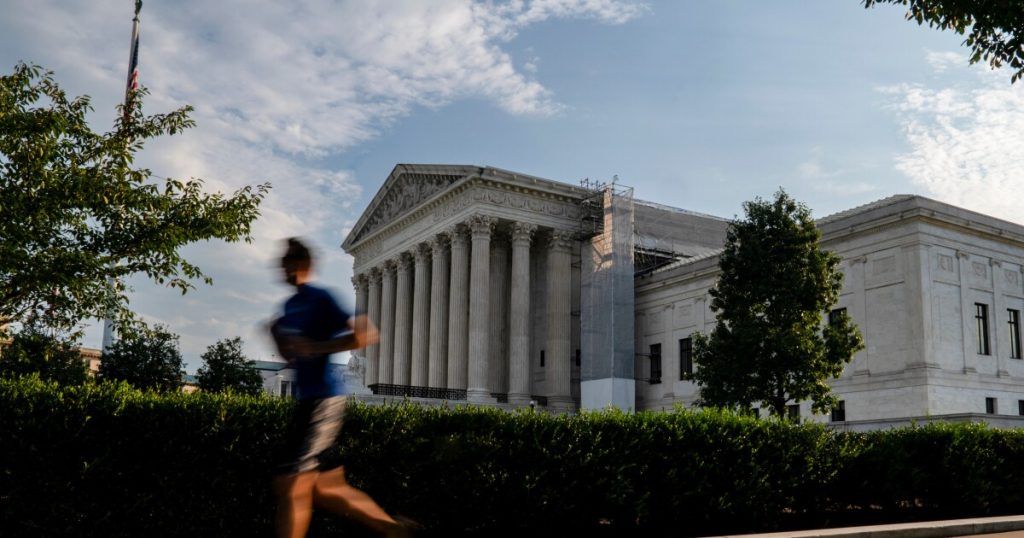The Supreme Court’s ruling allowing President Trump to proceed with mass firings at federal employees does not directly affect the Consumer Financial Protection Bureau, according to the CFPB employee union, which is fighting workforce reductions at the agency in court.
The CFPB’s union has a separate case pending before a panel of the U.S. Court of Appeals for the D.C. Circuit on whether acting CFPB Director Russell Vought can proceed with a mass reduction-in-force. Vought has sought to reduce the agency’s workforce
On Tuesday, the Supreme Court ruled that the Trump administration can move forward with its plans for mass layoffs at 19 federal agencies, lifting a stay that had been issued by a California judge. Labor unions led by the American Federation of Government Employees and AFL-CIO had filed a lawsuit against President Trump for instituting mass layoffs.
The CFPB’s union, National Treasury Employees Union Local 335 said in a statement that the bureau is “not directly impacted” by the Supreme Court’s ruling.
“We are not among the 19 plaintiff agencies,” a union spokesperson said in a statement. “We are not directly impacted. We also have our own litigation which currently prohibits [reductions in force, or RIFs] and firings at least until the D.C. Circuit issues its decision. Even so, the SCOTUS decision doesn’t really mean a whole lot to any agencies. Any future RIF still needs to follow the law and there will be additional litigation if, as seems likely, the [administration] doesn’t follow the law.”
In February, Trump issued an executive order directing agency heads to “promptly undertake preparations to initiate large-scale [RIFs], consistent with applicable law.”
In Tuesday’s order, the Supreme Court justices said that “the Government is likely to succeed on its argument that the Executive Order and Memorandum are lawful.” They also stated that that “we express no view on the legality of any Agency RIF and Reorganization Plan produced or approved pursuant to the Executive Order and Memorandum.”
In a concurrence, Justice Sonia Sotomayor said that the agency reorganization “plans themselves are not before this Court, at this stage, and we thus have no occasion to consider whether they can and will be carried out consistent with the constraints of law.”
Just days after appointing Vought, the Trump administration’s director of the Office of Management and Budget, to be the CFPB’s acting director, Trump confirmed to reporters that
Vought moved swiftly to dismantle the agency, telling all bureau staff to
The National Treasury Employees Union
“The case does not directly affect the CFPB case,” said David Silberman, senior advisor at the Financial Health Network and a former CFPB associate director.
Silberman said that the district court “found that Vought was about to shut down the CFPB in toto and issued an injunction to temporarily freeze the status quo so that Vought could not dismantle the agency.”
The Trump administration in the CFPB case “has acknowledged that it cannot eliminate the CFPB and must allow it to continue to perform statutorily required functions,” he said.
The administration took issue with the argument that it was shutting down the agency in court, saying instead that it was “only” stripping the agency down to the minimum needed to perform statutorily required functions. The Department of Justice, representing the Trump administration, has argued that the court should not overturn the administration’s judgment as to how many employees are needed to perform those functions, Silberman said.
“If the court were to agree that this is not really a shutdown case but a reduction in force case, the Supreme Court’s order today suggests the Court would be sympathetic to the argument that the Administration has discretion to decide how many employees are needed,” he said. “In that sense, the [Supreme Court] case could be relevant to the CFPB case — but only if the court agrees that this is not about an attempt to shut down the agency.”
The Trump administration is battling

